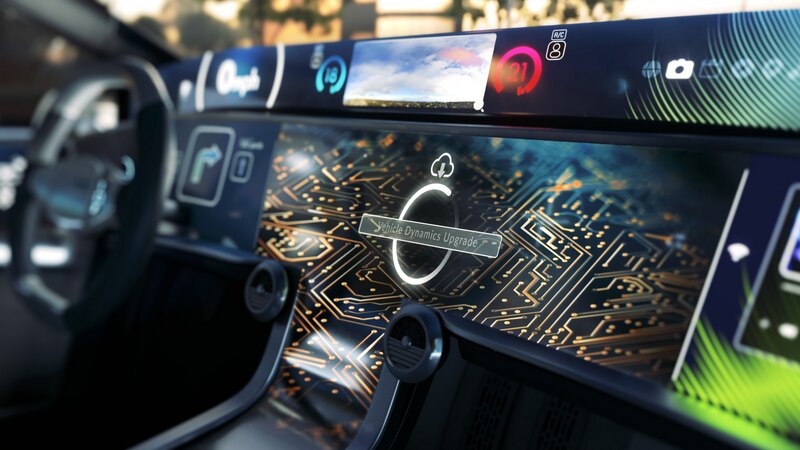The Seamless, Invisible Technology Future of Ambient Experiences

When discussing future technology innovation, we often think of new ground-breaking devices and computing experiences that we have yet to imagine. However, one of the next technology revolutions is likely to occur largely undetected, almost invisibly in the background, with devices only coming to the fore when necessary. As a result, a wide variety of seamless digital experiences will just happen automatically as part of our daily lives. This will be fueled by the exponential growth of artificial intelligence (AI) across all technologies.
What is ambient computing and how does it shape our interaction with technology?
This is known as “ambient computing”, essentially a computing future where our interaction with technology and the devices we use every day in the real-world becomes invisible. The many devices still have a role, but fade effortlessly into the background, not requiring people to consciously interact with them.
Enabling these ambient experiences will bring together services, data and intelligence through the acceleration of pervasive AI-based technologies, particularly in the Internet of Things (IoT) and consumer tech markets that consist of billions of sensors and devices.
For the user, this delivers ambient experiences that are highly responsive and personalized to their needs, preferences and environments without the need to press a touchscreen or button. The AI-based technologies in ambient compute systems will collate and interpret data and then help to implement the technology experiences that are relevant to people and the environments they are in. Essentially these highly personalized ambient experiences cannot be delivered without AI.
How is ambient computing transforming real-world technology experiences?
So how does this look in the real-world? Well, the foundations of ambient computing are already in place today.
Smartphones are central to ambient experiences, with today’s AI-powered digital assistants responding to the user’s voice to perform an action when prompted, like “turn on the lights.” However, future smartphone digital assistants will move from being reactive to proactive. They will understand the user’s location and perform a proactive action, like actioning a “welcome home” message when the user walks into their home, and then adapting the environment based on the user’s preferences, like automatically adjusting temperature settings and lighting or even playing the user’s favourite music on the home speaker. All of these actions will be learned from the user rather than being pre-programmed.

The smart home and how it connects with various devices is another area of ambient computing innovation. This means a combination of devices all automatically working together, with one device activating another having learned the best outcome for the end-user. For example, air purifiers that recognize high pollen days and automatically adjust their fan settings, while autonomously activating the robot vacuum to clean the house more.
Wearable devices, like smartwatches and fitness trackers, are other good examples. Currently, they collect data from the user and then provide personalized health and fitness recommendations either through the wearables or on the smartphone. However, through ambient computing these recommendations could be extended into other devices and services that, for example, could offer different meal options based on the health needs of individuals. People’s biometric data from these wearable devices could also be used to inform music and lighting choices in the home.
Outside of the consumer tech space, there are examples of ambient computing applications in urban environments. Smart cities use connected infrastructure, like traffic lights and public transportation, that adapt to real-time conditions and provide relevant information to the public. For example, there are sensors on some of today’s trains that detect whether certain carriages are busy or not, and then communicate this information to passengers. In the future, this could evolve to real-time directional instructions that guide people to the right space for them based on their travelling preferences and context within the train carriage.
What are the opportunities to further enhance ambient experiences?
However, these current day examples beg the question – how can ambient experiences be taken even further? From Arm’s perspective, we see significant opportunities to expand these current use cases with more compute and more personalization within different contexts and environments. This means amplifying people’s senses across different environments, more seamless experiences in public spaces, more relevant insights and information tailored to individual people, and more personalized environments that have even greater abilities to adapt to people’s preferences and needs.
Amplifying senses
The acceleration of ambient experiences means people will be able to use their devices – be that smartphones used today or future augmented reality (AR) wearables or hearables – to see, hear and even touch or smell at levels we have never seen before. Essentially, this will become a “digital sixth sense”. When connected with ambient compute systems, these devices could bring sounds to the fore that are important to the user and the environments they are in. For example, the sound of a car when approaching a blind corner. This use case also has wider positive implications for devices like hearing aids through providing advanced hearing capabilities.
Transforming the car
In the car, in-vehicle experiences will be entirely personalized to the driver and passengers, from temperature preferences to preferred driving routes, as the automotive industry accelerates to future software-defined vehicles.

Automatic bookings, more relevant and accurate insights
In buildings, ambient experiences will be automatic, providing more relevant insights for the user and those around them. Future workplaces will automatically book desks or rooms for workers as they walk into the building. Future smart hospitals and care homes will detect physical or physiological movement (such as breathing and heart rates) among patients through using simple sensors in the building, so any healthcare issues are identified early without the need for constant supervision. These ambient buildings could then deliver automated cleaning schedules based on dynamic real-time information showing parts that are occupied or not in use.
In healthcare, ambient intelligence will use advanced, voice-enabled AI to automatically document conversations between physicians, patients and families, rather than relying on paperwork from memory after these encounters. This will save health services time and improve the accuracy of what was agreed with patients.
Personalized environments
More personalized environments have significant implications for those who experience accessibility or neurodiversity challenges, with ambient computing adapting to different people’s needs to improve their lives. For example, for those with autism, public environments could be altered through lessening the impact of noise and people in crowded spaces.
Making ambient a reality
While these current and future examples of ambient experiences represent a potentially exciting vision of computing, they all need foundational technologies to make them a reality. This will involve greater compatibility and connectivity, and more advanced computing and security capabilities, like “privacy preserving compute.”
From a device perspective, people will continue to rely on their smartphones as the facitlitors of ambient experiences. The smartphone will aggregate data from the user and different environments to make ambient experiences a reality and also be the trusted custodians of people’s own personal data. However, in the future we anticipate that there will also be a new generation of devices and hubs supporting and facilitating the ongoing evolution of ambient experiences. Let’s explore some of the spaces that will evolve in the meantime.
Compatible sensors “built to last” with more compute
Sensors are undoubtedly going to be a big part of ambient computing, providing the contextual awareness to gather information on the environments that people find themselves in and then making that environment relevant based on their preferences. This will create the need for greater compatibility between sensors to ensure ambient computing is able to provide the ubiquitous, seamless experiences that it promises. Sensors are already a key part of the consumer IoT market today, but ulimately the data is being aggregated by the smartphone. To realise the vision of future ambient experiences, the next generation of sensors will need more compute power to support various AI workloads for data gathering and learning that are vital for these experiences.
All these sensors will need to be “ambient ready” and built on highly capable hardware platforms to support over-the-air software updates that continuously add new, more advanced features into different ambient compute systems. Sensors powering ambient experiences will also require a step-change in security functionality, providing a reliable, secure hardware foundation capable of managing large amounts of data, but also supporting fluid software deployment so developers can keep adding more features, updates and innovations.
Greater interconnectivity for personalization
There will need to be even greater interconnectivity across IoT devices and technologies, allowing more communication and information sharing to facilitate these personalized ambient experiences. These highly connected systems will require advanced computing that continuously learns from people over time, making proactive suggestions or performing personalized tasks with no user input.

“Privacy-preserving compute”
However, due to this collection of valuable personal data to create these highly personalized ambient computing environments for the user, privacy and security will be paramount. As mentioned previously, smartphones are already the trusted custodians of our data with a range of enhanced security technologies already available today, but additional counter-measures will need to be deployed across other devices to appropriately handle sensitive information. This ultimately requires “privacy-preserving compute” beyond just the smartphone to ensure that the avalanche of data needed to facilitate ambient experiences is protected, with secure maintenance and updates to devices also being essential.
The increasing deployment of AI and ML distributed across devices
As the volume of data increases across ambient compute systems, important and relevant information must be separated out from the rest of the noise. The processing of important, relevant information has to be compatible with privacy, bandwidth and energy efficiency requirements of ambient compute systems, with AI and ML capabilities needing to be placed increasingly closer to the data sources to achieve this. This means more AI and ML compute workloads happening at the edge – on the sensors, wearables, smartphones and other hub devices – for quicker, more secure, more personalized ambient experiences.
A technology “step-change”
Ambient computing promises a step-change in how we see and use technology in our daily lives. Moving away from a world where we touch and use devices to a world where the devices proactively react to our own preferences and create personalized experiences regardless of the physical environment.
However, with any technology revolution, ambient computing experiences will deliver significant challenges that the industry must solve. It will mean more computing power and AI from the smallest sensor to the biggest cloud, and even greater security as our personal data inform everyone’s own ambient experiences.
Arm’s role in the ambient computing world
Arm has the largest computational footprint on the planet, with more than 250 billion Arm-based chips shipped to date. As the world’s most pervasive computing platform, Arm has a role across every corner of the ambient computing world, providing the efficiency, performance, AI capabilities, security and scalable portfolio of technology solutions to deliver the seamless, personalized ambient experiences of tomorrow. Whether it’s smart cities and smart homes or sensors and smartphones, the Arm computing platform will be the foundational technology that delivers ambient experiences.
Learn more about ambient experiences
Get the lowdown on ambient computing in this new eBook.
Any re-use permitted for informational and non-commercial or personal use only.












